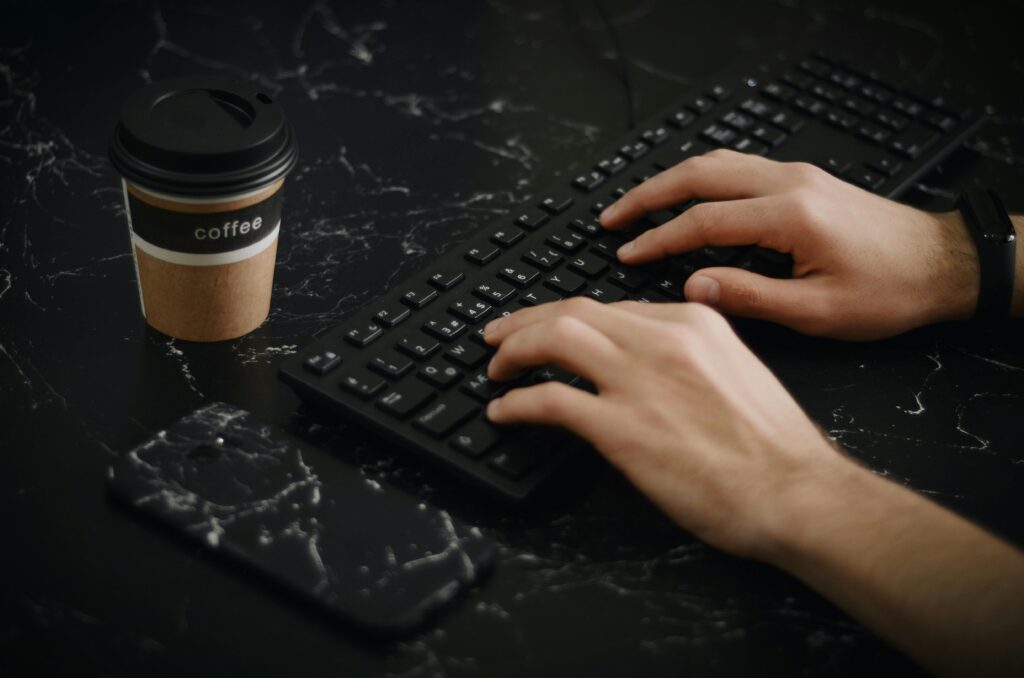
For anyone serious about touch typing, speed and comfort are always top of mind. Once you’ve mastered the basics, you might start to wonder—could switching to a different keyboard layout make you even faster? Enthusiasts of layouts like Dvorak and Colemak certainly think so, claiming they reduce strain and boost efficiency. But is that really the case?
Let’s explore the science, logic, and practicality behind custom keyboard layouts—and whether they’re worth the switch for modern learners and professionals alike.
A Quick Look at Keyboard Layouts

Most people use the QWERTY layout, developed in the 1870s for typewriters. It wasn’t designed for speed or comfort—it was designed to prevent typebars from jamming by spacing out common letters. Fast forward to today, and QWERTY remains the global standard, not because it’s the most efficient, but because it’s deeply ingrained in our systems and habits.
Alternative layouts like Dvorak and Colemak were created to improve typing efficiency and ergonomics. The Dvorak layout, developed in 1936, places the most commonly used letters on the home row to minimize finger movement. Colemak, a more recent layout, offers a balance—it’s more efficient than QWERTY but easier to learn than Dvorak because it retains many familiar key positions.
Studies have shown that these layouts can reduce finger travel and improve typing comfort, potentially leading to faster speeds over time. However, the learning curve is steep, and switching layouts can temporarily lower productivity as your muscle memory reprograms itself.
So, are the benefits worth the effort? It depends on your goals. For casual typists, sticking with QWERTY and refining technique may be more practical. For serious keyboard enthusiasts or those who experience wrist pain, experimenting with custom layouts could be a game-changer.
Master Typing & Digital Skills with Typesy!
Go beyond keyboarding—Typesy helps you boost digital literacy, productivity, and efficiency in today’s tech-driven world.
Efficiency vs. Adaptability: What Really Matters

The biggest advantage of layouts like Dvorak and Colemak is ergonomic efficiency. Because these layouts keep your fingers on the home row more often, they reduce unnecessary strain—something that long-term typists will appreciate. That said, efficiency doesn’t just come from layout. Proper typing posture and ergonomic setup play equally important roles in minimizing fatigue and maximizing comfort.
For students or professionals who type daily, a small ergonomic improvement can make a noticeable difference. But before you make the switch, consider adaptability. Most public computers, shared devices, and work setups default to QWERTY. If you’re the only one using a custom layout, you may find yourself constantly adjusting when you move between devices.
Modern typing programs, including Typesy, make it easier to test different layouts without permanently committing. You can practice on Dvorak or Colemak to see how it feels and track your progress through digital analytics. The data doesn’t lie—if your typing speed improves and your hands feel more relaxed, that’s a good sign the layout is working for you.
However, speed isn’t everything. Accuracy and comfort are just as important. Even with a perfect layout, poor typing habits or bad ergonomics will slow you down. Focus on foundational skills first: correct finger placement, good posture, and consistent typing practice are proven to make a bigger difference than any keyboard layout alone.
Finding What Works for You
So, do custom keyboard layouts really improve your speed? The answer is—sometimes. For those dedicated to optimizing every keystroke, Dvorak or Colemak can provide measurable gains in speed and comfort. For most typists, though, the time investment may not be worth the limited advantages.
The key takeaway is that no layout is a “one-size-fits-all” solution. What matters most is how you use your keyboard. If you type daily, pay attention to how your hands feel, your accuracy rate, and your long-term comfort. Combine that awareness with digital education tools that measure your progress, and you’ll find your best path to improvement—whether that’s mastering QWERTY or venturing into the world of custom layouts.
Remember, typing isn’t just about hitting keys—it’s about mastering an essential digital skill that supports every area of modern learning and communication. If you can type efficiently and comfortably, you’ll be better equipped to focus on what really matters: your ideas.
Not on Typesy Yet? You're Missing Out!
Master typing, boost productivity, and enhance digital literacy with Typesy—the leading platform for adaptive and engaging typing education. Whether you're an individual learner, a homeschool educator, or managing a classroom, Typesy has the perfect solution for you!
Choose Your Ideal Experience:




